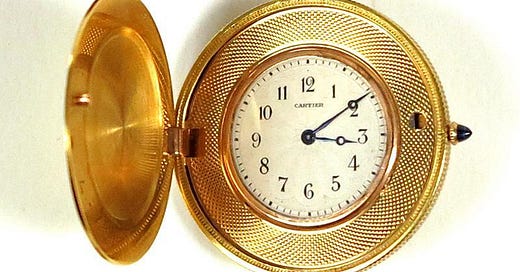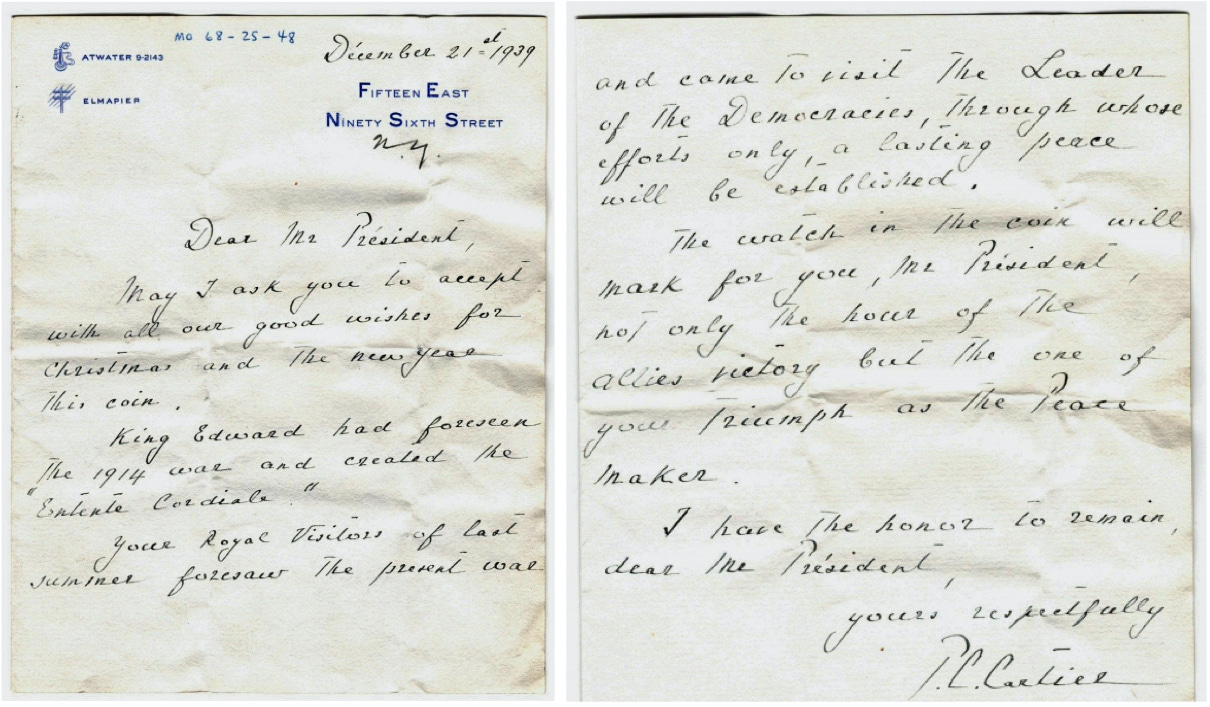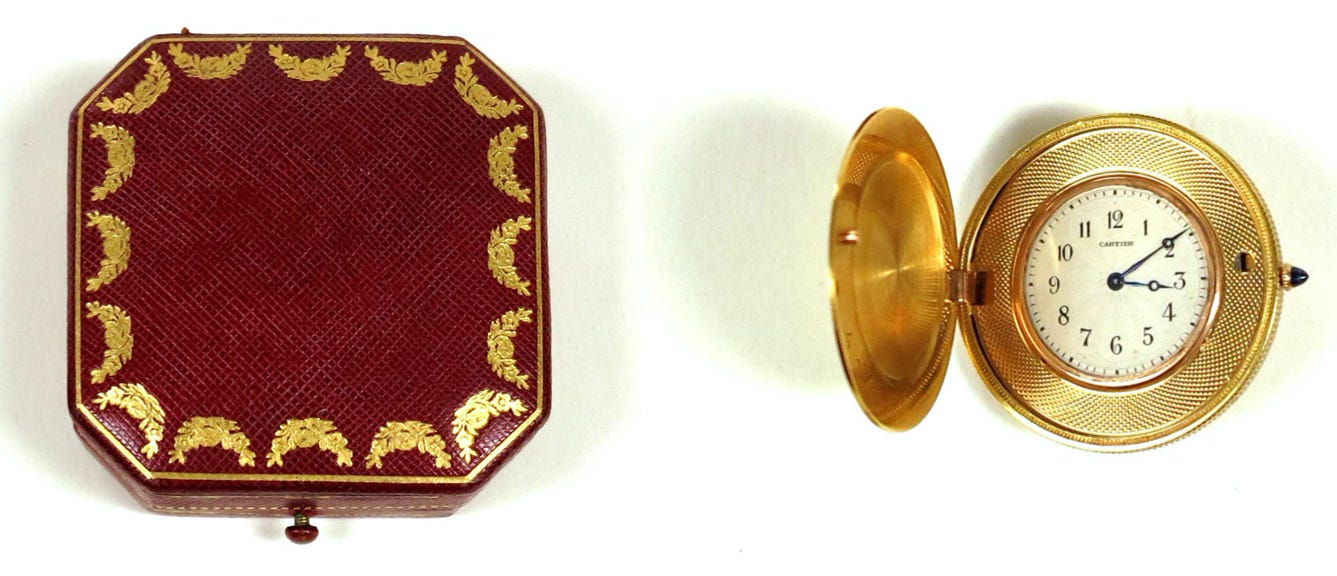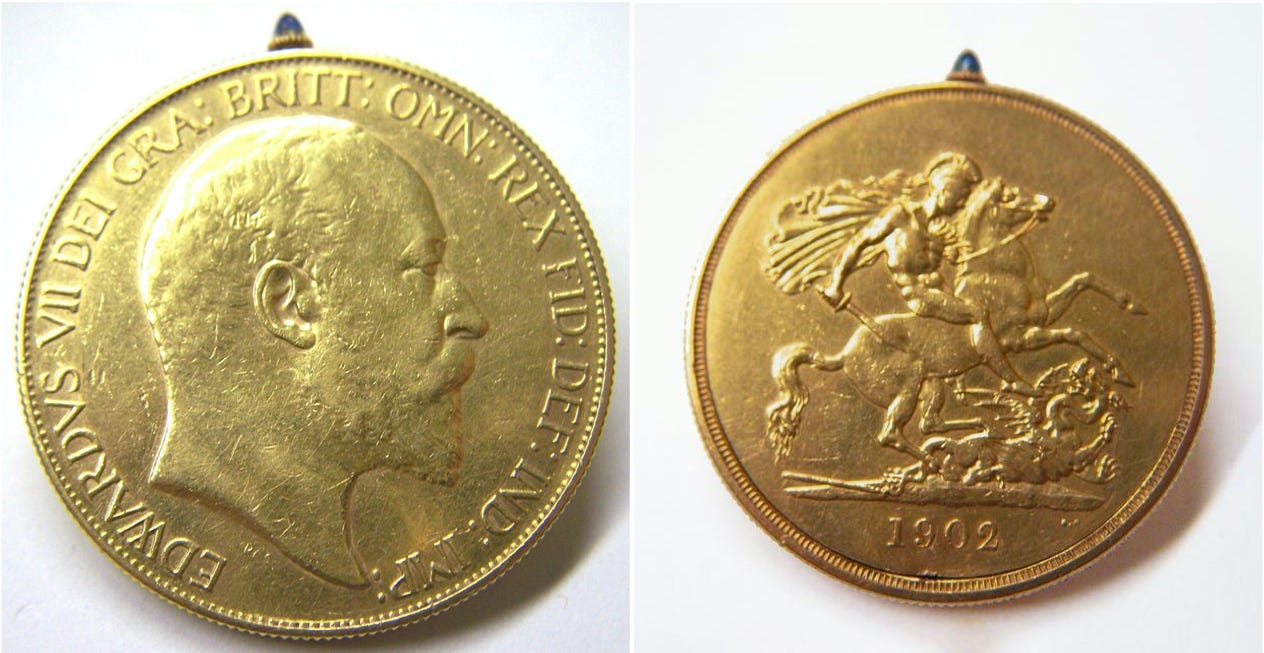3 Timepieces Given to President Franklin D. Roosevelt, Including a (Rarely Seen) Cartier Coin Watch Gifted by Pierre Cartier
An Inauguration Day special edition, with an exclusive look at a rarely seen Cartier coin watch owned by FDR
By: Charlie Dunne
Fit for a President: 3 important timepieces gifted to President Franklin D. Roosevelt
[Ed. note: Some photos and text have been edited out of this newsletter to make it inbox friendly. Head to the link above for the full article.]
It’s no secret that the watch community is infatuated with what is on the wrists of our Presidents. Whether scouring the internet for elusive photographs or prepping the list for the incoming President, it is one commonality that unites watch lovers. While President Lyndon B. Johnson was famous for giving out great timepieces, President Franklin D. Roosevelt was fortunate in that he was often the recipient of fantastic timepieces. Sure, President Roosevelt was extremely generous in gifting a Patek Philippe pocket watch to the Dalai Lama, but what good is being Commander-in-Chief if you don’t have a few timepieces of your own to commemorate important life events?
Occasions commemorated with a timepiece truly make a watch collector’s heart melt. Just ask a fellow watch enthusiast to tell you about a watch that is sentimental to them. They’ll tell you more than simply a reference number, opting instead to tell stories or memories. Whether it’s superfluous or monumental anecdotes, the details make the watch. And while no one knows our interests quite like ourselves, oftentimes the thoughtfulness of the timepiece given holds a bit more romanticism than the ones we acquire ourselves. Three timepieces given to President Roosevelt have particularly noteworthy stories behind them.
Subscribe to get Rescapement Weekend delivered to your inbox every Sunday:
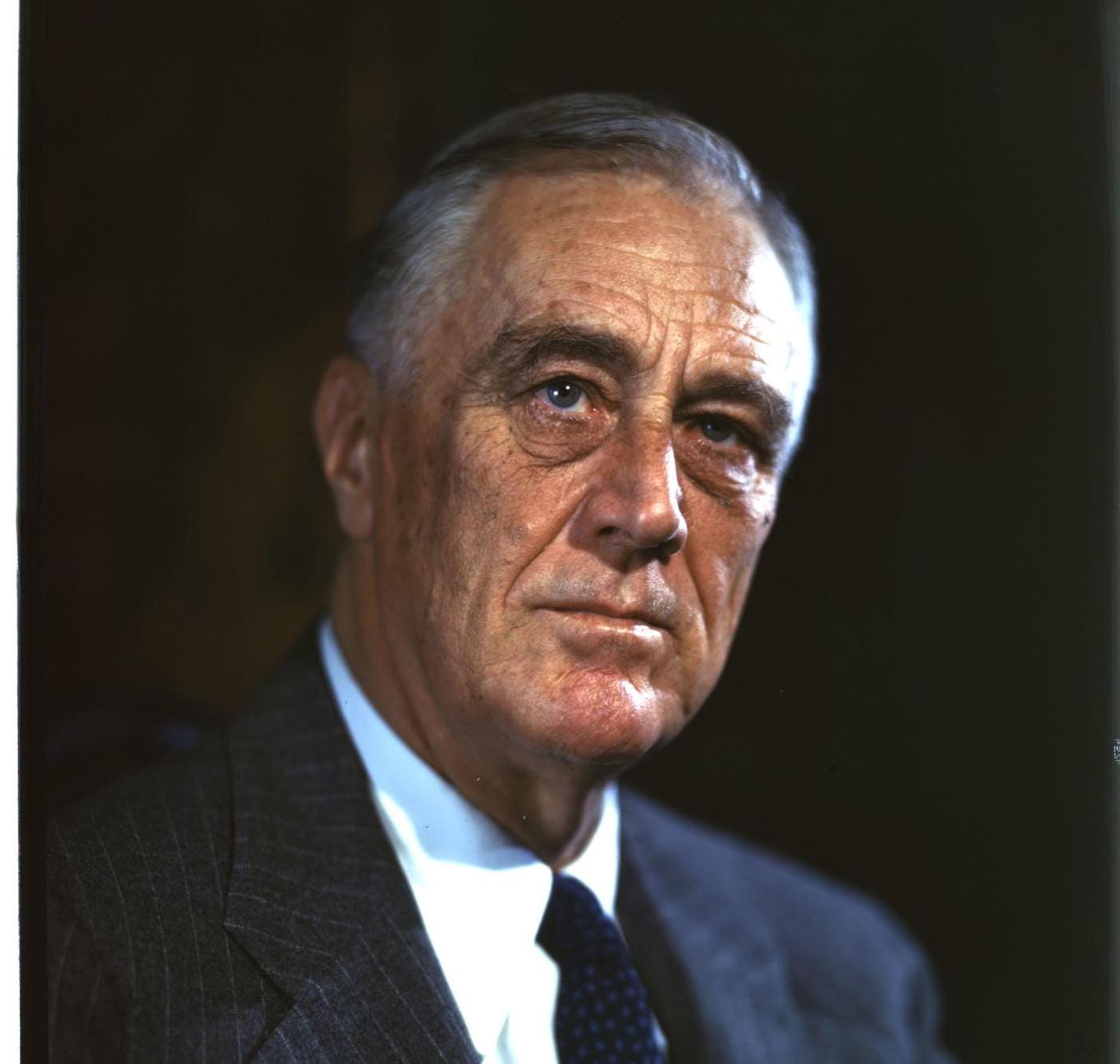
"The test of our progress is not whether we add more to the abundance of those who have much; it is whether we provide enough for those who have too little."
-FDR, Inaugural Address, January 20, 1937.
About President Franklin D. Roosevelt
Born in early 1882, Franklin Delano Roosevelt grew up in Hyde Park, N.Y. His family was financially comfortable, which allowed him to benefit from education at private primary schools and later Harvard University. By the age of 18, his fifth cousin Theodore Roosevelt had become the U.S. President. FDR would go on to earn his BA before the end of his fifth cousin’s first term in office. Soon after, his aspirations to become a public servant came to fruition, when in 1911 he became Senator of his home state. At the age of 39, he would contract poliomyelitis leaving him unable to fully use his legs. The humbling setback to a man afforded many advantages in life, resulting in a deep sense of empathy towards those dealt a lesser hand.
Six years later, in 1927 Roosevelt would purchase a resort in Warm Springs, Ga. that he would spend time at for his polio treatment, and to develop an onsite treatment facility for individuals recovering from the disease. Later he would play an integral role in the inception of the March of Dimes, followed by serving as Governor of New York in 1929. By 1933, he was elected as President of The United States. Upon his greatest professional achievement, he would be met with the responsibility of many intense challenges facing the United States. His urgency to assist the U.S. citizens suffering in the midst of The Depression came through The New Deal, tackling a range of immediate issues designed to help the working people and nation’s recovery. Throughout his political career, FDR remained quite private due to his paralysis, as he did not want the citizens to be concerned about his competency.
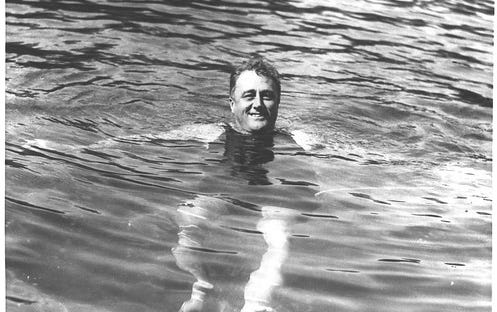
Although not without fault, FDR possessed many admirable traits of great leadership. In various instances, he upheld priorities of the previous Hoover administration — for instance, by pledging to uphold the Good Neighbor Policy, a commitment towards non-intervention in developing relationships within Latin America and a priority of the previous administration — illustrating a transition of power coupled with a bipartisan attitude for moving the country forward that warrants credit to both presidents. Additionally, FDR was known for his ability to initiate cooperation between opposing parties, even going as far as locking his constituents in rooms until a compromise had been made. As the only president to be elected to four terms, President Roosevelt’s legacy is defined by his perseverance to create a better future for the American people.
Fit for a President: 3 important timepieces gifted to FDR
A Chiming Audemars Frères, Tiffany Signed Movado Calendar Wristwatch & A Cartier Coin watch given on Christmas of 1939 (from Pierre C. Cartier)
A wedding day pocket watch
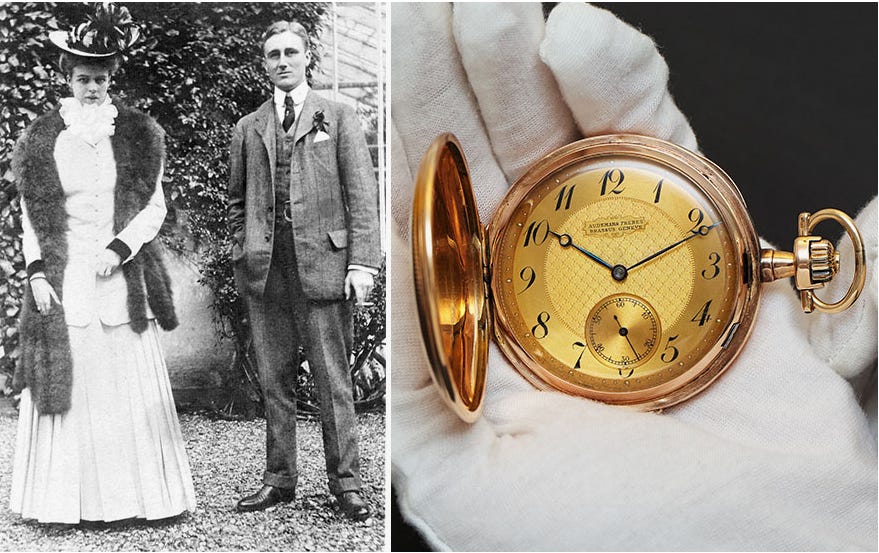
One of the earliest and most distinctive timepieces given to FDR was an Audemars Frères striking watch from 1900. Yes, that Audemars. Audemars Frères was the short-lived watchmaking company of brothers Hector and Charles-Henri Audemars from 1885 - circa 1909. While Hector and Charles-Henri Audemars are descendants of Louis Benjamin Audemars, they were not affiliated with Audemars Piguet & Cie which was founded in 1881 by Edward Auguste Piguet and Jules Louis Audemars. Both the Audemars and Piguets were world-renowned watchmaking families from the Valle de Joux, making the antique timepiece a fascinating piece of both Swiss and American history.
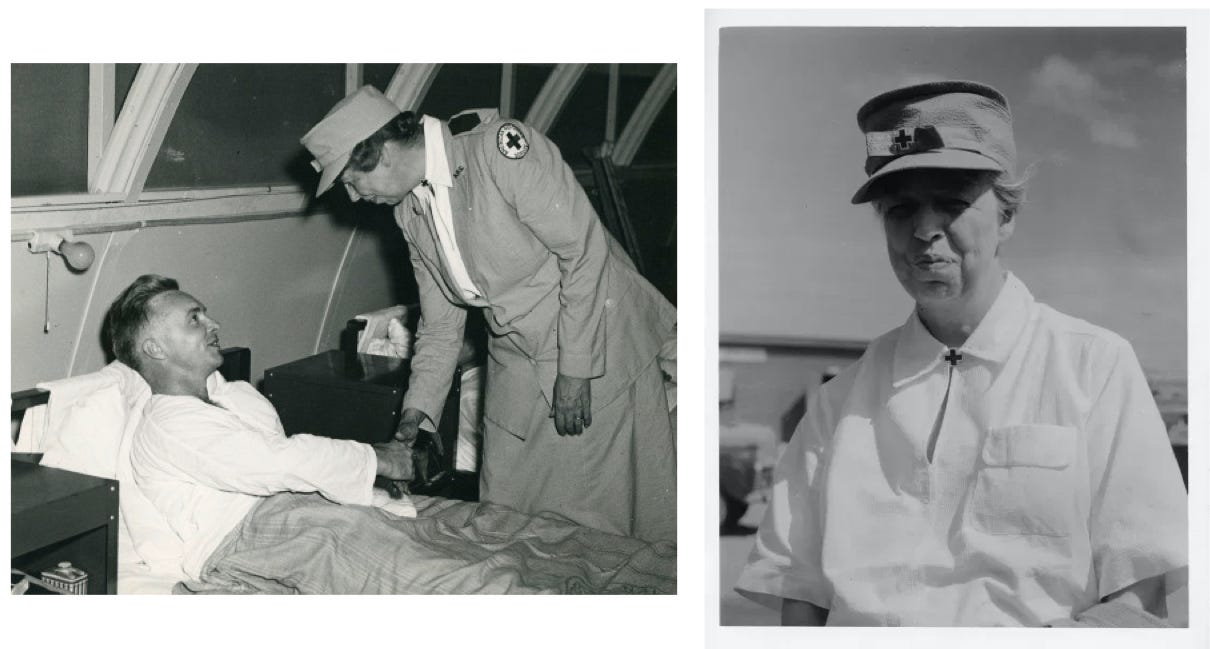
If the name or complication was not impressive enough, the Audemars pocket watch is believed to have been given to FDR on the day of his wedding by his wife-to-be, Eleanor. Eleanor was not simply the First Lady; she was a principled woman who felt compelled to promote human rights for those less fortunate than herself. Yet, her life was not one without difficulties. Before the age of 10, she had lost both parents (her mother from diphtheria contracted after a surgery, and her father, shortly after, who struggled deeply from the loss of his wife). While this would have been detrimental to the development of most children, Eleanor’s unwavering determination led her to excel in academics and develop a keen sense of empathy from such hardships early on.

Eleanor Roosevelt dedicated herself to a multitude of causes ranging from women’s rights to child welfare, as well as being a vocal advocate for racial equality. During WWI, she worked tirelessly with the Red Cross to assist in any capacity possible. She would go on to be assigned to inspect St. Elizabeth’s hospital, which at the time was a prominent treatment center for servicemen deeply struggling with the emotional and mental repercussions of war. Fifteen years after volunteering in WWI, she would travel throughout the South Pacific again with the Red Cross, this time as the First Lady. To be the recipient of a watch from such an impactful individual is a luxury few men have the privilege to experience.
“A good leader inspires people to have confidence in the leader; a great leader inspires people to have confidence in themselves.”
-Eleanor Roosevelt
Birthday gift from son-in-law
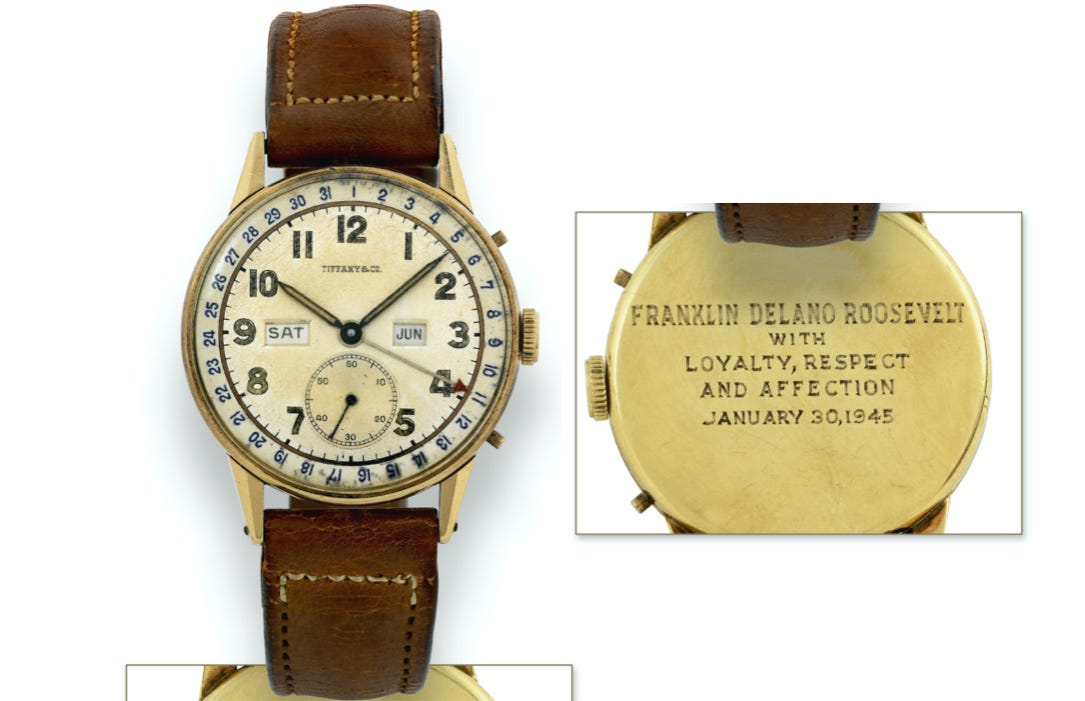
Clarence “John” Boettiger was born March 25th, 1900 in Chicago, Ill. Before turning 18, John left school to enlist in the United States Navy during WWI. Upon his return, he embarked on a career as a reporter, which would eventually lead him to cover politics. During 1932, he was been assigned to cover the then New York Governor's presidential campaign. It was on this assignment that John would form a close friendship with his future wife (and FDR’s daughter), Anna Roosevelt. In early 1935, John and Anna would marry at the Roosevelt's home in Hyde Park (now the FDR Presidential Library & Museum).
John Boettiger was the original recipient of this Tiffany-signed Movado triple calendar during the Christmas of 1944. It appears Boettiger felt his father-in-law would appreciate such a watch from the prominent retailer of his home state, as he would go on to give it to the President for his 63rd birthday. The caseback’s inscription reads "Franklin Delano Roosevelt with Loyalty, Respect and Affection January 30, 1945". It is believed that in the following days, FDR wore the watch during his attendance at the Malta Conference (Jan. 30 - Feb. 3) and the Yalta Conference (Feb. 4–11).
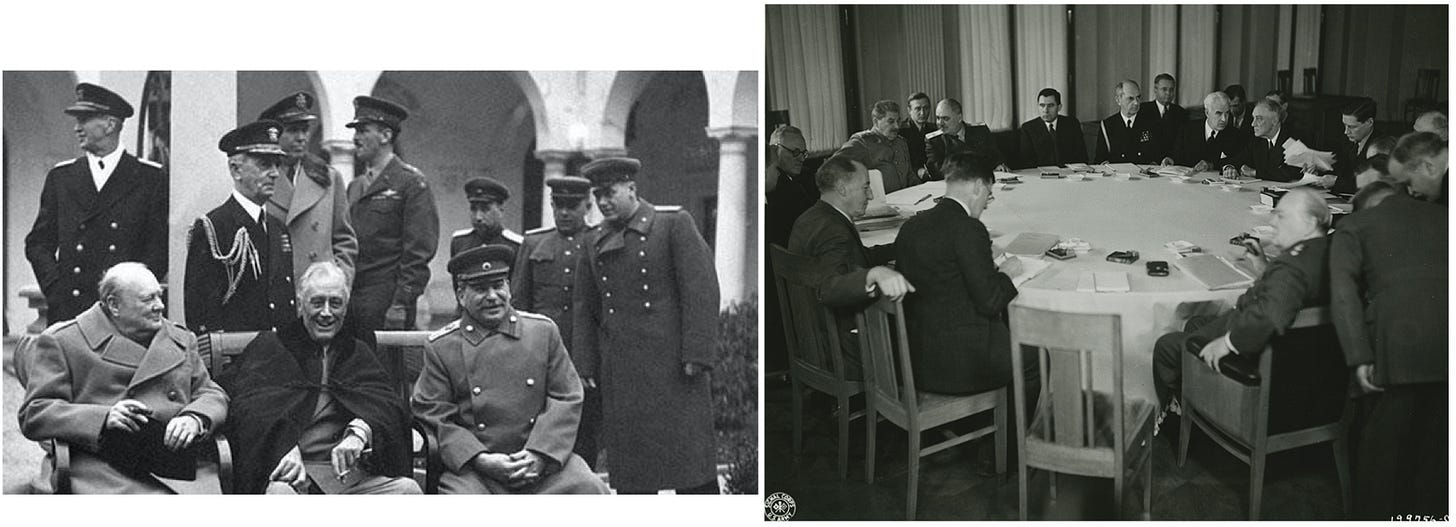
Pierre C. Cartier & President Roosevelt
Pierre Camille Cartier was the middle son of the three Cartier brothers (Louis-Joseph, the eldest, and Jacques-Théodule, the youngest). He is noted for his role in establishing both the Cartier London boutique in 1902 at the age of 24, and subsequently Cartier New York in 1909. Pierre, like his brothers, was very family oriented and had a strong sense of duty towards his country. So much so that, upon being called to serve in the French infantry in 1914, he left his comfortable life at Cartier New York without hesitation. Unfortunately, shortly after his departure, Pierre would become ill and was ultimately diagnosed with diphtheria. He would be declared unfit to serve and eventually discharged. His wife Elma, concerned for his well being, felt obligated to come to his aid by leaving the U.S. and volunteering at a nearby hospital adjacent to where he was recovering.
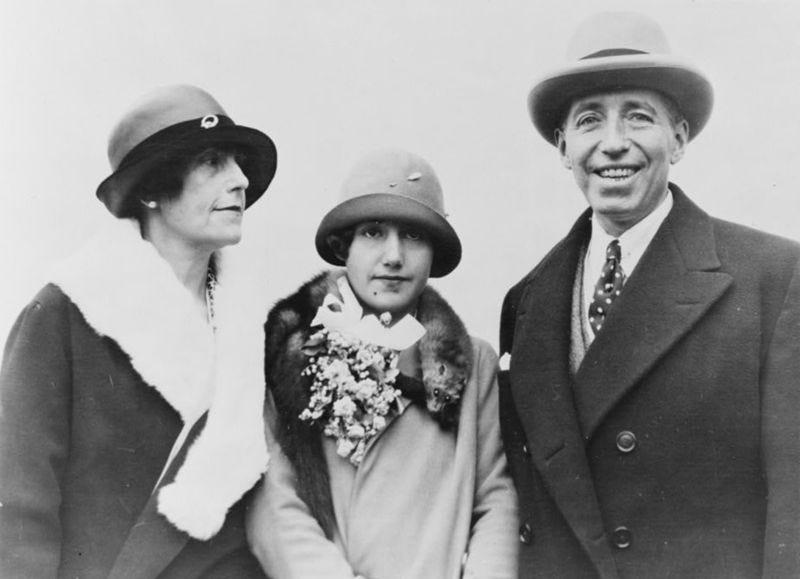
Upon Pierre’s return, it was important to him that his career in the U.S. not only served to elevate the Cartier name, but also his native country. With the strict lessons of mindfulness, professionalism, and respect that he had learned from his beloved father, he saw himself as an ambassador of France and was set on leaving a favorable impression on his adopted country.

On September 3, 1939, France declared war on Germany. One can only imagine Pierre’s emotions while in America during World War II. Between the uncertainty of his home nation’s fate and the concern and eventual loss of both brothers during 1941-1942, this would certainly have been one of the most tragic periods in his life. Yet Pierre was an individual of great optimism. In Francesca Cartier Brickell’s book The Cartiers the relationships and opinions of individuals that presented hope for Pierre are explored. One of the most noteworthy was FDR. His admiration of President Roosevelt was evident in his traditional Christmas gifts, most notably the iconic Victory Clock given to President Roosevelt on December 20, 1943. However, a particular coin watch that Pierre gave to FDR prior to the Victory Clock has remained under-acknowledged over the decades.
A Christmas Story: The Cartier coin watch with presidential provenance
Letter from Pierre Cartier to FDR:
“Dear Mr. President,
May I ask you to accept with all our good wishes for Christmas and the new year this coin.
King Edward had foreseen the 1914 war and created the “Entente Cordiale”.Your Royal Visitors of last summer foresaw the present war and came to visit The Leader of the Democracies, through whose efforts only a lasting peace will be established.
The watch in the coin will mark for you, The President, not only the hour of The Allies victory, but the one of your Triumphs as The Peace Maker.
I have the honor to remain, dear The President.
Yours respectfully
P.C. Cartier
This Cartier coin watch has yet to be discussed in depth beyond a brief mention in Sotheby's FDR Cartier Victory Clock catalog of 2007. Due to the recent online expansion of the Franklin D. Roosevelt Presidential Library & Museum artifact collection, watch lovers can begin to admire yet another horological instrument of the 32nd President. Upon inquiry in 2020 for information on the Cartier coin, the FDR Library & Museum confirmed it still resides in its collection. Museum Collections Manager/Registrar, Michelle Frauenberger, not only shared the images with Rescapement, but was also responsible for its documentation by Sotheby’s in 2007.
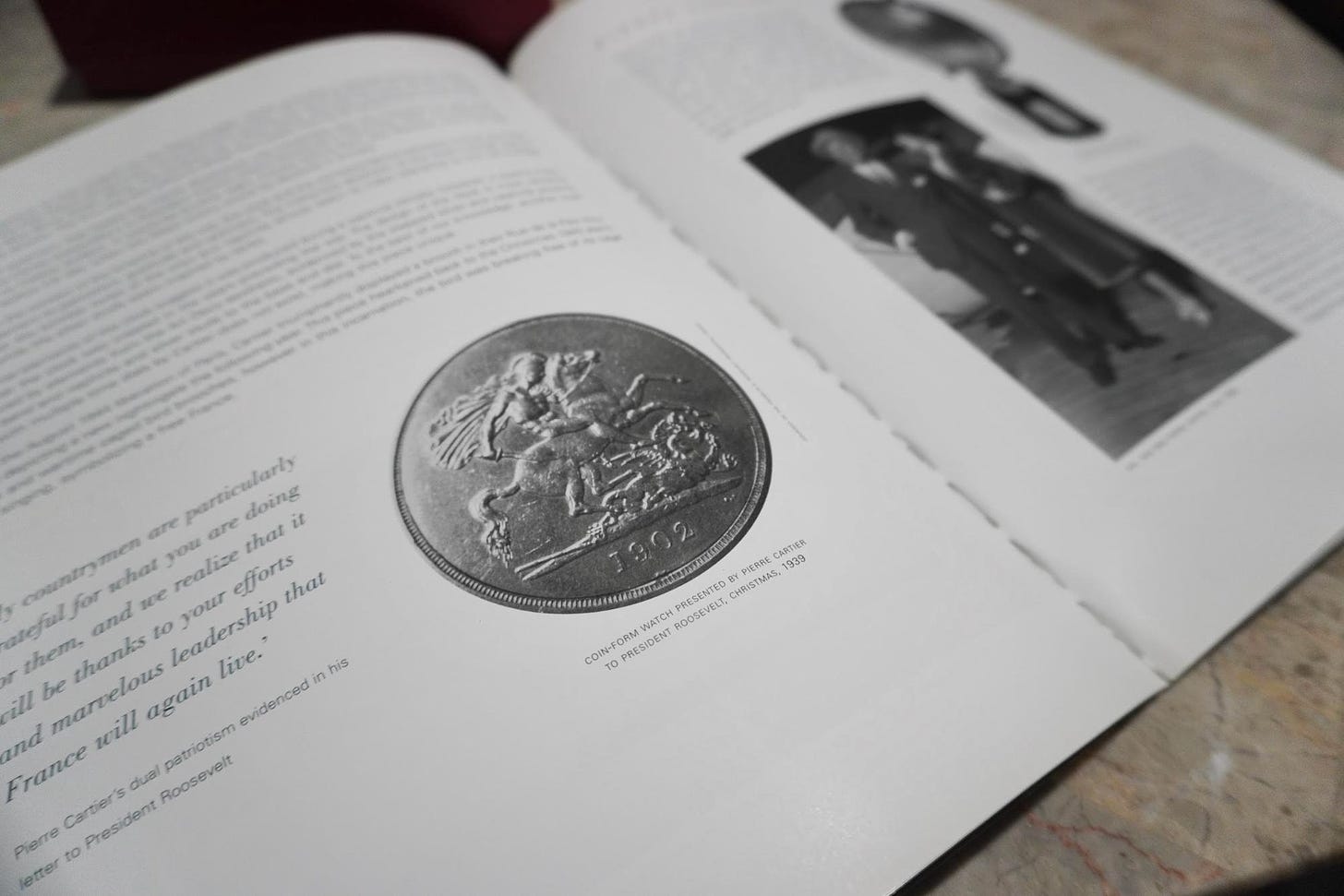
Ironically, the coin given to the President was not of his own country’s denomination, but rather an 18K “Gold Crown 1902” featuring King Edward VII on the obverse (heads for those not into numismatics). At the time, the coin itself would bear a face value of 5 shillings. According to vintage watch expert Eric Wind of Wind Vintage, most coin watches are made from $20 U.S. gold coins due to their larger size. As far as how the currency and denomination affect the value and collectability, Wind states “there are many collectors that are drawn towards $20 coin watches. It’s rarer to see the smaller $10 coin watches or coins in other currencies. These typically require a higher level of skill to produce due to the smaller size and miniaturization aspect and can command a higher value due to their rarity despite the gold weight value being less.” However, there are exceptions that distinguish certain coin watches such as the retailer, maker, or the detailed polishing.
Cartier — along with Patek Philippe, Piaget, Rolex and Audemars Piguet — was among the most prominent coin watchmakers. While most Cartier coin watches from the era were not made from shillings, the watch is also distinguished by the sapphire cabochon crown very much in line with the Cartier DNA. Cartier coin watches are prominently designed in that the winding stem is internalized within the coin via a carved grave for the watch to be safely enclosed. Joseph Vergely, the head watchmaker of European Watch and Clock Company Paris, is credited as being an integral influence in this technique of creating coin watches. Among Vergley’s other noteworthy accolades were designing the “D” shaped deployant buckle, imaginative jewelry based timepieces, and introducing Cartier to Edmond Jaeger.
Shillings would eventually be replaced in 1971 when the pence was introduced to the British currency for a more practical 100 base coin system. The effigy of King George VII is encircled with the legend (text): EDWARDVS VII DEI GRA: BRITT: OMN: REX FID: DEF: IND: IMP:. The translation from Latin reads “Edward the Seventh, by the Grace of God, King of all the Britains, Defender of the Faith, Emperor of India”. This legend was featured on British coins from 1902 - 1908. As noted in Hans Nadelhoffer’s book Cartier, a coin watch from Cartier was in fact given to King Edward VII during his coronation by none other than Queen Alexandra.
As seen in the Sotheby’s catalogue, the reverse (tails) contains a depiction of St. George. The designer of this coin was Benedetto Pistrucci (1783-1855), a highly acclaimed Roman gem engraver who would gain the attention of British royalty leading to his commission of designing coins featuring King George III and King George IV. His first depiction of St. George and the dragon was originally upon request by Lady Spencer who was adamant that the depiction be “in the Greek style”. This would go on to be incorporated on his Waterloo Medal, and later the Crown 1902. According to the FDR Artifact Collection, the coin contains the stamped number 9308 on the interior of the lid. It is also accompanied by the original red and gold leather Cartier presentation box which was bequeathed to the museum by Anna Roosevelt Halsted, the only daughter of President Roosevelt.
It is worth considering the fact that Pierre Cartier had given this Cartier coin watch to FDR during the Christmas of 1939, just months after France’s inevitable declaration of war. The Battle of France would last from May 10 to June 6, 1940, leaving France, the Netherlands, Belgium, and Luxembourg under German control. It could be inferred that the unsettling fear of an invasion of France led to Pierre’s first gesture in an attempt to inspire FDR.
When asked about the relationship between Pierre and FDR, Brickell, author of The Cartiers, stated “Pierre’s wife, Elma, was a long-time family friend of Sara Roosevelt (FDR’s mother). Letters between the two reveal their close friendship: they were frequent guests at each other’s houses for luncheons or dinner, would attend the opera together and were particularly supportive of each other through World War II - Sara was terribly concerned for Marion (Pierre and Elma’s pregnant daughter in occupied France, whose husband had been captured by the Nazis). Pierre, meanwhile, was a consummate networker (a key reason behind Cartier’s early success in America) but in FDR’s case, the correspondence I’ve seen suggests a very genuine admiration for him as a leader, seeing him as perhaps the only person who could save the Free World.” In later correspondence between the two, Pierre would champion the U.S. Forces while expressing his optimism for France to the President. One could assume that Pierre’s sense of duty compelled him to instill a positive impression of the French people, and hopefully, the President would develop a sense of responsibility to those in need abroad. Just shy of two years later, the United States would officially enter the war after the bombing of Pearl Harbor.
Two sides of the same coin
The past year has provided many of us with a great deal of time to learn and reflect. While travel restrictions and social distancing measures have greatly affected private businesses and nonprofits, it has fostered a new appreciation for the simple luxuries we are afforded as Americans. Looking back, public works programs from President Roosevelt like the Hoover Dam are not simply a National Historic Landmark to marvel at, but a testament to what can be accomplished by Americans during the country’s darkest moments. In 1933, 50 percent of the American workforce was unemployed or underemployed. Yet through tireless efforts, America would overcome and recover. With many of our fellow Americans facing layoffs, there are opportunities to learn from previous leaders. The creation of new jobs brought fulfillment and a sense of purpose to millions of citizens across the nation. We can remain optimistic that American leaders will look at FDR’s actions as a blueprint for tomorrow.
Finally, at the time of the coin’s acquisition, the seeds of World War II were growing. As far as its significance, perhaps it remains something of importance only to those obsessed with timepieces. I’d like to think the thoughtful Christmas gifts from Pierre Camille Cartier to President Roosevelt were not simply a luxury gift, but rather a reminder for the President. One of understanding and belief in what could be accomplished in every minute that passes. In the current period of great divide within our nation, let us hope the same spirit of optimism emerges.
“The only limit to our realization of tomorrow will be our doubts of today. Let us move forward with strong and active faith.”
-FDR, excerpt from an unread speech Jefferson Day, April 13, 1945

—
Rescapement is a weekly newsletter about watches, mostly vintage. Subscribe now to get it delivered to your inbox every Sunday. Follow us on IG too.


